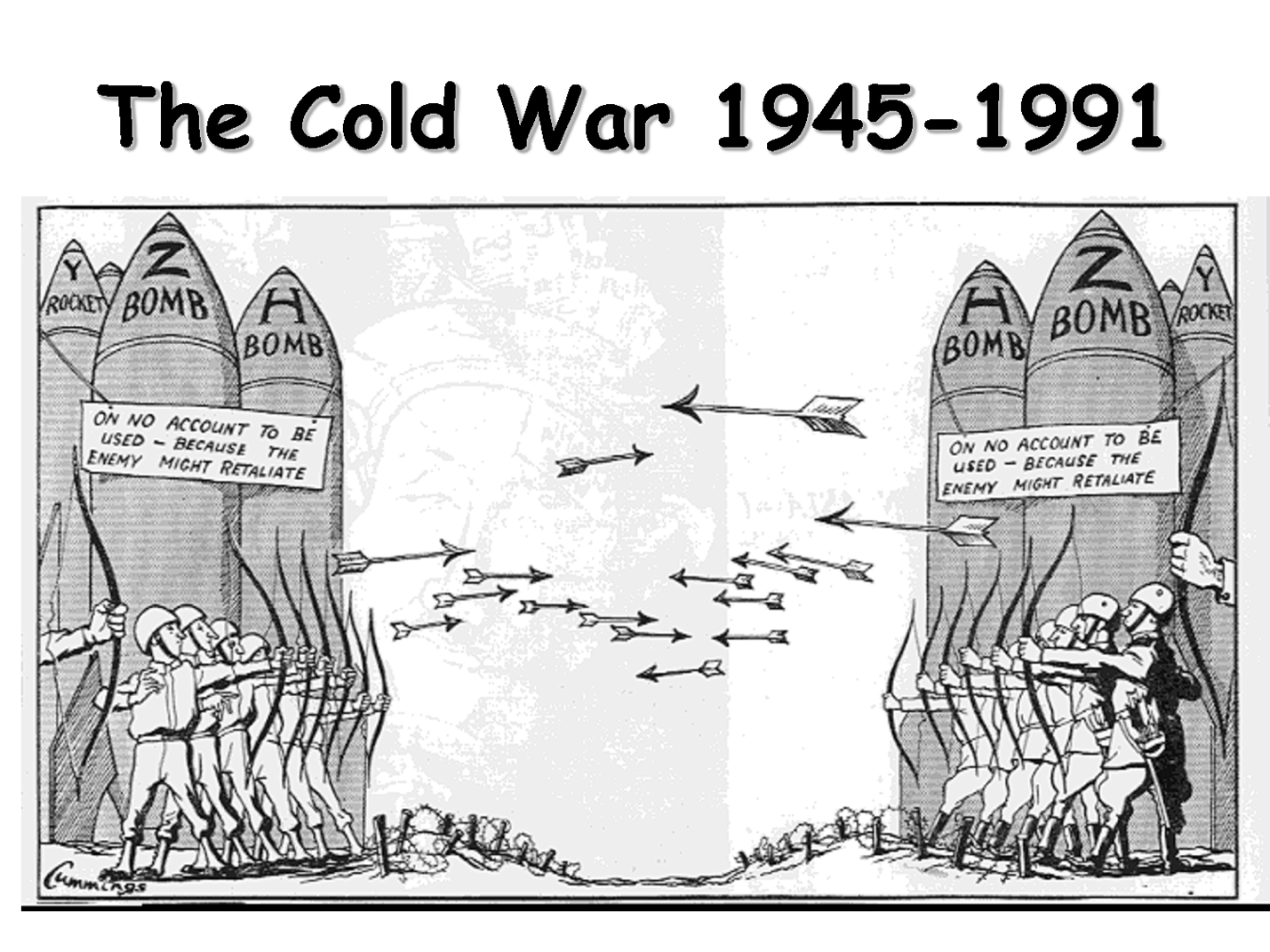
As Cold War 2.0 heats up and places the world in peril of nuclear war, it is worthwhile to look back at the history of the original Cold War where Russophobia began to metastasize like a cancer in U.S. society.
A new book by Gabriela Gavrilov,[1] U.S.-Russian Commercial Relations 1763-1933: Origins of Russophobia shows that the Cold War was largely a phony war, rooted in political theater, that inspired the growth of the military-industrial complex in both the U.S. and Russia.
The reason the Cold War was phony is that the U.S. and Soviet Russia enjoyed close commercial relations, with the Soviet Union in no way threatening the U.S. militarily—despite vast propaganda to the contrary.
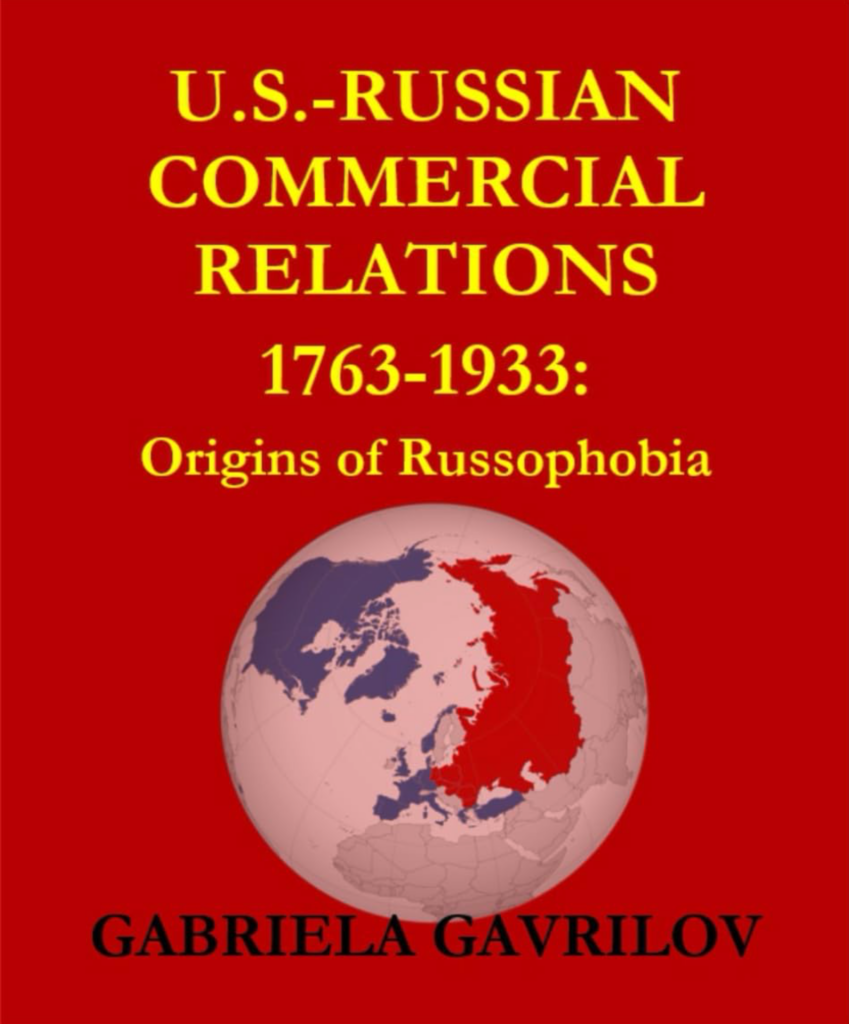
The U.S. could have easily established friendly diplomatic relations with the Soviets—as visionary leaders such as Henry Wallace advocated for—without major cost to the U.S. economy. However, the illusion of a Soviet threat was necessary to sustain the military-industrial complex and to rationalize U.S. covert and military operations around the globe.
The Cold War really started in 1918 when the Woodrow Wilson administration illegally invaded Russia without congressional consent in an attempt to overturn the Bolshevik revolution that established the Soviet Union.[2]
Wilson and his financial supporters opposed the Bolsheviks because they made alliance with Germany and ended Russian involvement in World War I, and took measures to nationalize private industries so the revenues could be used to develop the Russian economy.
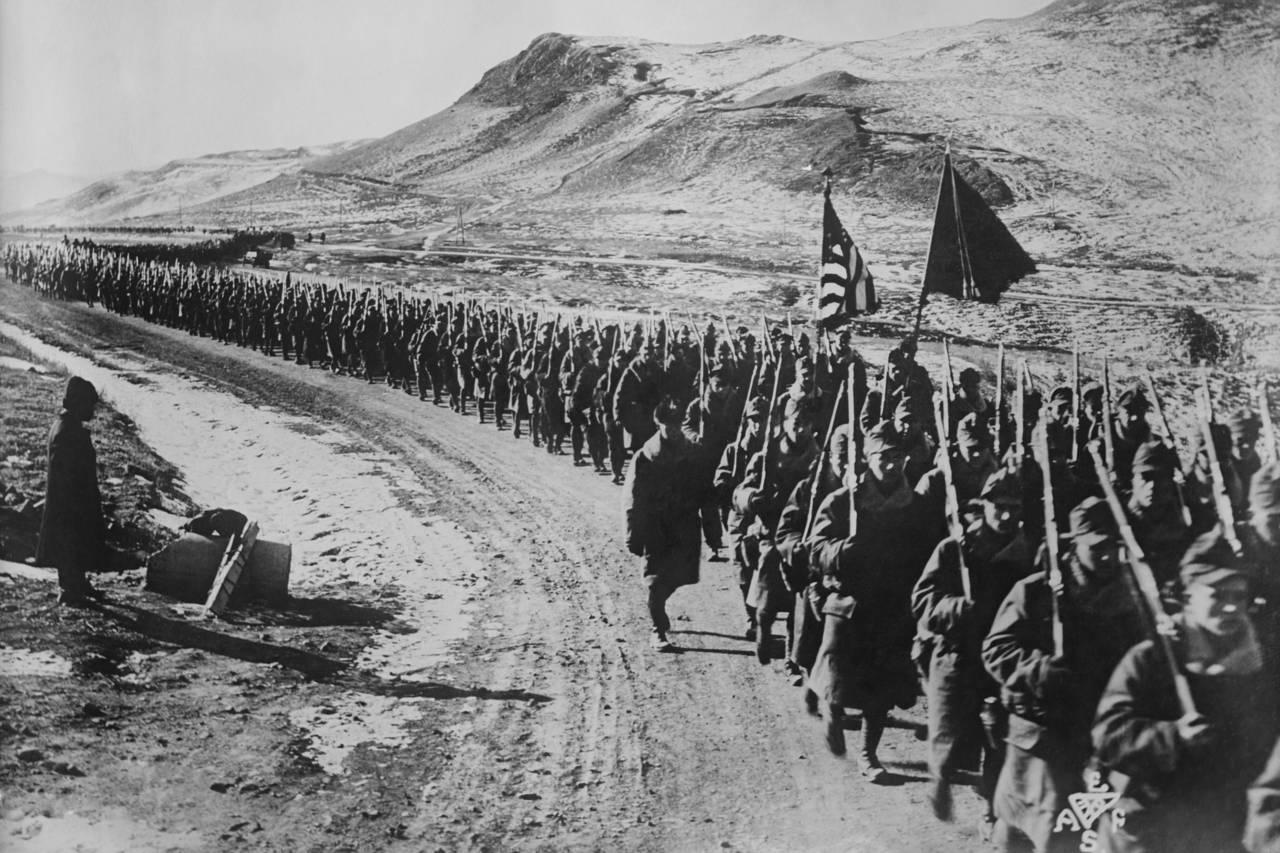
In 1917, American profits from trade with Russia were about $700 million, one-fifth of Americans’ entire overseas earnings and seven percent of all corporate profits, which the Russian Revolution jeopardized.[3]

Czar Nicholas II (1868-1918), the last czar, was worth an estimated $300 billion at the time of his deposition in February 1917. His Imperial Court owned 250,966 square miles of land rich in gold, silver, iron ore and lithium.[4]
The official reason the Bolsheviks gave for forced nationalization and unprecedented centralization of the economy was to prevent Russia’s exploitation by foreign firms.
The new command economy indeed helped achieve these ends and bolstered state revenues, allowing the bolsheviks to eradicate unemployment, homelessness and poverty and to build the Red Army into a formidable force that defeated the Nazis.
However, after the triumph of the bolshevik revolution Gavrilov writes that “it was th[e] grandest foreign firms who quickly stepped into the Soviet economy—of the top 50 U.S. firms in 1917, at least 27 of them quietly began participating in the direction of Soviet industrial trusts between 1920 and 1928. Some, such as International Harvester [which supplied Russia with 20% of its agricultural machinery], Westinghouse, General Electric and Singer Sewing machine, already had enterprises in Imperial Russia and continued to do business with the Soviets.”[5]
Following the overthrow of Czar Nicholas II in February 1917, the Wilson administration supported the ascension of Alexander Kerensky, whose rule proved to be short-lived because he kept Russian troops in World War I and refused to support land reform or wealth redistribution measures that the Russian population clamored for.
J.P. Morgan and John D. Rockefeller provided direct financing to counter-revoltuionary Admiral Alexander Kolchak, who tried to make himself dictator in Omsk, Siberia, during the Russian civil war.[6]
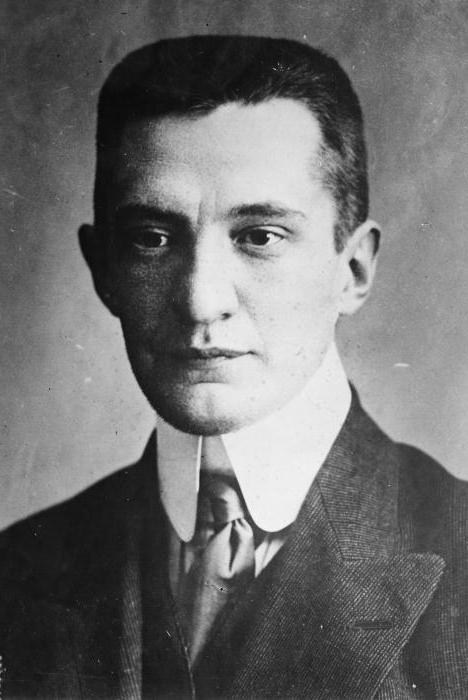
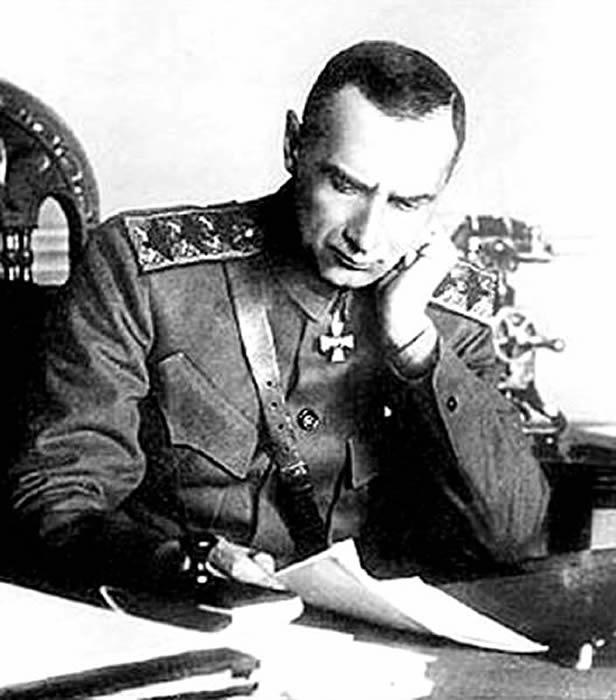
When it became clear that the U.S. invasion of Russia was not succeeding, the Wilson administration began back-channel negotiations with Vladimir Lenin, the founding head of the Soviet Union.[7] The negotiations were carried out by William C. Bullitt, son of an elite Philadelphia family whose grandfather oversaw a corporate merger that helped establish J.P. Morgan & Co., and Raymond Robins, a copper magnate and self-fashioned progressive with ownership stakes in Anaconda Copper who had made a fortune in the Klondike gold rush.[8]
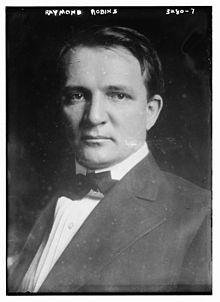
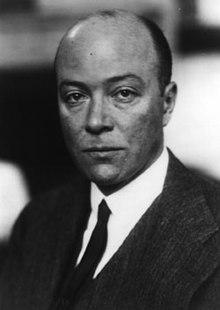
Bullitt and Robins negotiated a deal with Lenin exempting U.S. corporations from Soviet nationalization decrees in exchange for the U.S. government providing foreign capital and U.S. technical expertise to the Soviets, which they urgently needed.
The exemptions were mostly for firms affiliated with the House of Morgan, whose partner, Henry P. Davidson, had directed an American Red Cross Mission Robins was part of that provided a cover for Wall Street’s attempted economic penetration of Russia.[9]
According to 1919 Senate hearings on Bolshevik propaganda, Bullitt and Robins negotiated with Lenin for the exemption from nationalization of International Harvester’s Lubertzy plant, National City Bank, First National Bank, Guaranty Trust Co., New York Life Insurance Company, J.M Coats (textiles), the Morgan-affiliated Westchester Brake Company and Morgan-affiliated Singer Manufacturing Company, which was allowed to operate its factory in Podolsk, even switching over from sewing machines to explosive shells.[10]
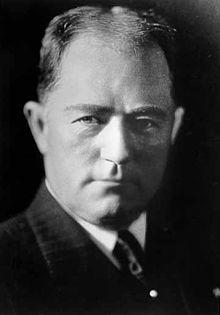
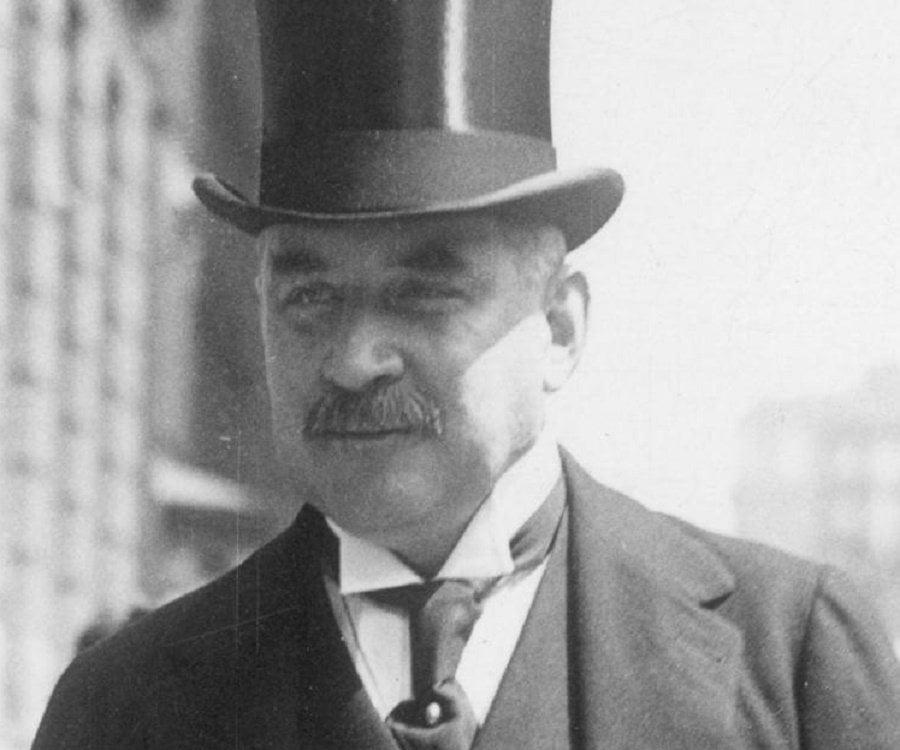
The Rockefeller-owned Standard Oil was able to arrange concessions in the Baku oil fields, which it took over in July 1920 from the Swedish-based Nobel Brothers’ oil company that the Bolsheviks had nationalized.[11]
The Nobels’ were Rockefeller’s major competitor in Europe, so the Russian Revolution proved to be a boon to them—although politically influential members of the family, like Nelson and David Rockefeller, became zealous cold warriors.
The man considered to be one of the fathers of the Cold War, W. Averell Harriman, political mentor of Joe Biden in the U.S. Senate, signed a concession in 1925 for a manganese mine in southern Russia with Soviet secret police head Felix Dzerzhinsky and invested in logging and gold-mining ventures that used Gulag labor.[12]
Son of a famous Gilded Age railroad tycoon, Harriman founded the investment bank Brown Brothers Harriman, that helped bankroll Nazi financiers in the 1930s. He went on to become U.S. ambassador to the Soviet Union during World War II, governor of New York, and a high-level State Department official in the Truman, Kennedy, and Johnson administrations.[13]
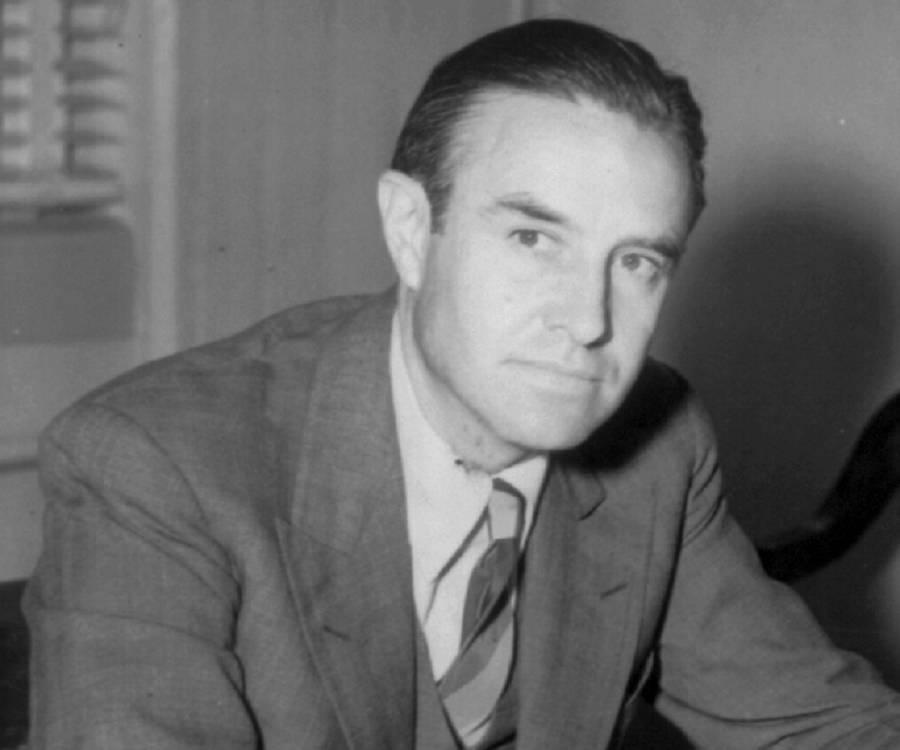
The story told by Gavrilov makes clear that the financial interests of Harriman and others like him were not set back too seriously by the Russian Revolution—quite the contrary.
Their advancement of an aggressive anti-communist foreign policy was driven predominantly by the fear that governments around the world inspired by the Bolshevik ideology would not make the same concessions to wealthy capitalists that Lenin had.
Furthermore, the Soviet “threat” could be invoked to rationalize interventions around the world that were really designed to open up U.S. corporate investment opportunities and allow for the extraction of natural resources. The same “threat” was used to legitimize gargantuan military budgets that enriched military contractors that Wall Street firms either owned or were invested in.
Power of U.S. Monopoly Capitalism—and a Regime of Judases
The greatest irony detailed in Gavrilov’s book is that, while Lenin was a great theorist of the evils of monopoly capitalism and championed its destruction, according to her, he wound up fortifying it in a betrayal of the Russian Revolution.
Under the Soviet five-year plans, all or parts of 500 industrial projects were built in total or in part by Western firms. They were given contracts by the Soviet state, which functioned as a vast monopoly cartel operating without any democratic accountability.
Gavrilov writes that, “since the Soviet market had been eviscerated of domestic competition and organized into national industrial trusts, once foreign firms became part of a Soviet industrial trust they enjoyed the monopoly held by that trust.”[14]
According to Gavrilov, much like fascist states, the Soviet Union offered an ideal business climate for multinational corporations because independent labor organizing was outlawed and strikes, when they emerged, were violently crushed.
The ideal of worker-run industry that Bolshevik revolutionaries had fought for never came to pass, and dissidents, whether leftists, anarchists, or rightists, were sent to the Siberian Gulag.[15]
The harsh nature of the Soviet regime did not bother the U.S. corporate titans who made vast profits there, in some cases based on reliance on Gulag slave labor.
Gavrilov quotes Antony Sutton, author of a study on Wall Street and the Soviets, who noted that it “has been almost universally accepted that the foreign concession policy of the 1920s and 1930s did not aid the industrial development policy of the USSR.”[16]
Gavrilov goes one step further in suggesting that the Soviet government was “nothing more than a neo-colonial regime installed to reorganize Russia’s economy for exploitation by foreign firms.”[17]
A considerable number of these firms were German, and Gavrilov presents evidence that Lenin’s Bolshevik faction was financially supported by Israel Lazarevich Gelfand (aka Alexander Helphand Parvus), a wealthy Balkan arms dealer and socialist with ties to the German High Command and Wilhelmstrasse who participated in the failed 1905 Russian Revolution alongside Lenin and Trotsky.[18]
Starting in September 1914, Gelfand was entrusted with the supervision of revolutionary fifth-column groups inside Russia being supported by the German and Austrian governments.
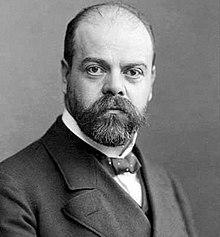
Gavrilov writes that, after the Bolsheviks seized power, Gelfand “developed the Soviet program for the transformation of the Russian economy from open market competition (rigged in part in favor of the Tsar) with protection for indigenous businesses against powerful foreign firms to a closed government sponsored monopoly dominated by foreign corporations. He called it socialist but a more accurate name would be ‘corporatocracy.’”[19]
According to Gavrilov “none of Lenin’s ‘revolutionaries’ pointed out that by destroying indigenous businesses, they were destroying all competition in foreign commercial encroachment and laying the Russian economy open to monopoly domination by the very foreign firms they publicly vilified.”[20]
Lenin himself is depicted by Gavrilov as the ultimate sell-out and fraud. Preaching a rhetoric of class conflict, he was chauffeured through Moscow in a Rolls-Royce “Silver Ghost” and established residence in the palatial Gorki estate whose former owner he had arrested as an “enemy of the people.”[21]

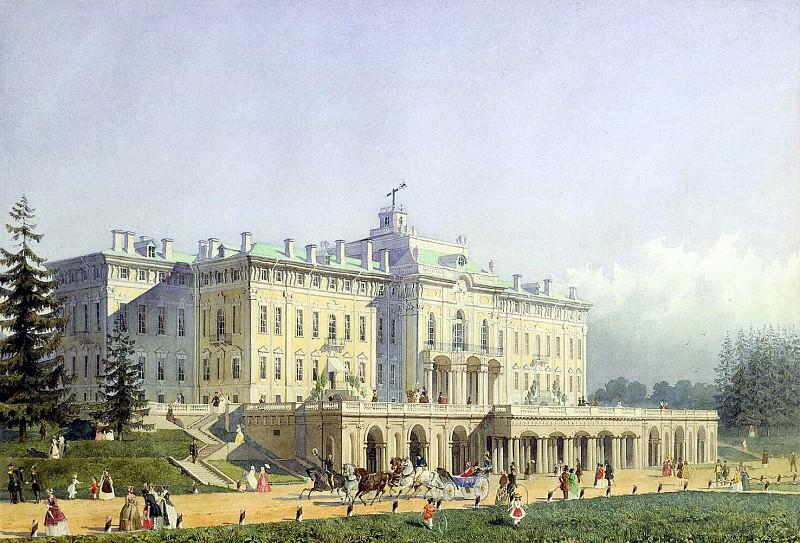
Gavrilov asks: “If Lenin was truly such a patriot and advocate of the Russian proletariat, why wasn’t he promoting Russia’s own businesses instead of making deals with one of the West’s foremost industrialists Henry Ford?”[22]
Deceptively presented as a recipe to decolonize Russia, Lenin’s brand of socialism was utilized to “reorganize Russia’s economy and resources into monopolistic packages which were then handed over to the largest Western firms for exploitation.”[23]
According to Gavrilov, “by claiming to be battling the small minority and well-to-do industrialists, who controlled Russia’s industries, Lenin convinced the Russian public to destroy their own indigenous entrepreneurs, place their business and the vast resources of the country in his hands while he was offering the West monopoly control of Russia’s economy in exchange for royalties to keep his regime of Judases in privilege and power.”[24]
Gavrilov’s assessment turns the way most Americans view the history of the Soviet Union and Cold War—whether on the left or right—on its head.
Rather than being an enemy of capitalist development, Soviet leaders in her presentation empowered the very corporate interests in control of the U.S. government that were behind the Red Scare propaganda and pushed the world to the brink of nuclear war.
These interests were extremely clever in manipulating public opinion while advancing public policies that served clearly demarcated class interests.
The incredible global reach of U.S. corporations is evident in their ability to penetrate countries like Russia regardless of their governing ideology. They are able to effectively coopt independent political and revolutionary movements, and will shrewdly support different sides in political conflicts to extend their domination worldwide.
As Cold War 2.0 enters its second decade, we see the continued desire of U.S. corporate interests to seize control over and exploit Russia’s natural resources—a goal they were close to achieving when Boris Yeltsin ruled Russia in the 1990s.
The fact that Russia’s current leader Vladimir Putin is more of an authentic nationalist than Lenin, according to Gavrilov, may help account for the vicious demonization of him by political elites and in the U.S. media, which remains under the control of the 1% that drives U.S. foreign policy.
Putin has adapted to U.S. sanctions by establishing more of a self-reliant Russian economy that draws on indigenous entrepreneurship and technological development. He has also formed alliance with China in an anti-American bloc that Lenin and his successors could never effectively establish (recall the Sino-Soviet split).
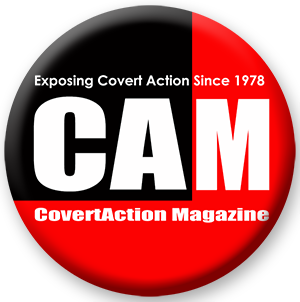
Gavrilov is an independent scholar living in Western Massachusetts who lived in Poland during the 1980s and traveled with the Afghan mujahideen in 1985. ↑
See Jeremy Kuzmarov, “The Wilson administration’s war on Russian Bolshevism,” https://peacehistory-usfp.org/ww1-russia/ ↑
Gavrilov, U.S.-Russian Commercial Relations 1763-1933 (self-published, 2024), 222. U.S. trade with Russia had risen from $60 million in 1905 to $80 million in 1911, providing an annual profit of almost $7 million to a wide range of firms. American investment during the same five-year period grew from $10 million to $30 million and was yielding returns for stockbrokers in 1910 of as much as $20 million per year. By 1916, American exports to Russia had expanded nearly 25 times from just two years earlier, to almost $500 million per year. Trade between the U.S. and Russia, carried out primarily through J.P. Morgan as purchasing agent in London, increased ten-fold between 1914 and 1917. ↑
Gavrilov, U.S.-Russian Commercial Relations 1763-1933, 17. ↑
Gavrilov, U.S.-Russian Commercial Relations 1763-1933, 19. ↑
Antony C. Sutton, Wall Street and the Bolshevik Revolution (New Rochelle, NY: Arlington House, 1974), 131. Reliant on Cossack forces who sought vengeance against the Bolsheviks for atrocities committed against them, Kolchak’s forces carried out anti-Semitic pogroms and other atrocities that Lt. Gen. Robert Eichelberger said would have been “shameful in the Middle Ages.” In Kuzmarov, “The Wilson administration’s war on Russian Bolshevism.” ↑
Lenin ruled from 1917 until his death in 1924. ↑
Gavrilov, U.S.-Russian Commercial Relations 1763-1933, 303. Bullitt became the first U.S. ambassador to the Soviet Union after the Roosevelt administration re-established diplomatic relations with it in 1933. Robins was a member of the Progressive Party who was known for his support of labor rights. He was also a Christian evangelical pastor. Historian Antony C. Sutton wrote that “there is considerable evidence, including from Robins’ own statements, that his reformist social-good appeals were little more than covers for the acquisition of further power and wealth.” Antony C. Sutton, Wall Street and the Bolshevik Revolution, 59. ↑
Building off an earlier mission headed by former Secretary of State and Wall Street lawyer Elihu Root, the Red Cross mission was arranged by J.P. Morgan partner Henry Davidson and was headed by William Boyce Thompson, New York Federal Reserve Chairman and Anaconda copper magnate. One member of the mission, Buffalo pharmacist Boris Bernstein, had strong ties to American oil tycoon Armand Hammer who became a major investor in the Soviet oil industry and later bankrolled Al Gore, Sr., and Jr.’s political careers. (Gavrilov, U.S.-Russian Commercial Relations 1763-1933, 23). ↑
Gavrilov, U.S.-Russian Commercial Relations 1763-1933, 360, 362. Not all U.S. businessmen who were given concessions in Russia were Morgan-affiliated. The former imperial coal mines at Kuzba, the Czar’s largest and richest land holding, became the American Autonomous Industrial Colony in 1921 under the management of American labor leader Bill Haywood, co-founder of the radical leftist Industrial Workers of the World (IWW). The 10,000-square mile region, rich in gold, silver, coal, iron and lithium, included a 36.8-square mile tract for agricultural production. ↑
Gavrilov, U.S.-Russian Commercial Relations 1763-1933, 364, 445. Chemical giant DuPont was building chemical plants under the first Five-Year Plan. ↑
Gavrilov, U.S.-Russian Commercial Relations 1763-1933, 467. ↑
See Rudy Abramson, Spanning the Century: The Life of W. Averell Harriman, 1891-1986 (New York: William Morrow & Co., 1992); Walter Isaacson and Evan Thomas, The Wise Men: Six Friends and the World They Made (New York: Simon & Schuster, 1988). ↑
Gavrilov, U.S.-Russian Commercial Relations 1763-1933, 35. ↑
Gavrilov, U.S.-Russian Commercial Relations 1763-1933, 42. Gavrilov asserts that there were 18 million Gulag prisoners between 1918 and 1956. For an anarchist critique of Leninism, see Emma Goldman, My Disillusionment in Russia (New York: Doubleday & Co., 1923). ↑
Gavrilov, U.S.-Russian Commercial Relations 1763-1933, 534; Antony C. Sutton, Wall Street and the Bolshevik Revolution, https://www.voltairenet.org/IMG/pdf/Sutton_Wall_Street_and_the_bolshevik_revolution-5.pdf. Gavrilov points out that, “with the exception of Sutton, no mainstream recognized Soviet/Russian historian on either side of the Atlantic has dedicated any real research on the subject [of U.S. economic penetration of the Soviet Union]. Only William Appleman Williams, 1921-1990, one of the 20th century’s most prominent revisionist historians of American diplomacy, mentioned American firms in Russia in his American-Russian Relations, 1781-1947 (1952).” ↑
Gavrilov, U.S.-Russian Commercial Relations 1763-1933, 535. ↑
Gavrilov, U.S.-Russian Commercial Relations 1763-1933, ch.10. Gavrilov suggests that the U.S. State Department suppressed documents (Sisson documents) revealing Lenin to be a German agent because they wanted to keep him in power. Other historians, building on the assessment of radical journalist John Reed, have presented the Sisson documents as fabrications manufactured by U.S. intelligence and promoted by Woodrow Wilson’s war propaganda agency to fuel support for the U.S. military invasion of Russia. In a 1956 article, George F. Kennan, the father of the containment doctrine, showed the Sisson documents to be forgeries. Z.A.B. Zeman and W. B. Scharlau wrote in The Merchant of Revolution: The Life of Alexander Israel Helphand (Parvus), 1867-1924 (New York: Oxford University Press, 1965) that “without Parvus and his organisation, through which millions of gold marks were channeled to the Bolsheviks, Lenin could never have achieved supreme power.” Helena Stone pointed out aptly in a 1985 article in the Soviet Studies that “to prove the existence of ties between Parvus [Gelfand] and the Bolsheviks does not mean that Lenin was a German spy.” Lenin’s willingness to sign away Russian interests to Germany under the Brest-Litovsk Treaty exemplifies for Gavrilov his function as a German agent. Russia under the agreements promised to pay Germany 300 million gold marks compensation for damages Germany incurred during its campaign against Russia in World War I. Russia also ceded portions of Russian petroleum regions to Germany’s ally, Turkey, and promised 25% of Baku’s petroleum output (94.6% of which was controlled by Western firms) to Germany. The Bolsheviks, Gavrilov writes, gave away 34% of their population, 54% of their industrial land, 89% of their coalfields, and 26% of their railways to the Central Powers. ↑
Gavrilov, U.S.-Russian Commercial Relations 1763-1933, 258. ↑
Idem. ↑
Gavrilov, U.S.-Russian Commercial Relations 1763-1933, 395. Other top Bolshevik leaders compromised socialist principles by becoming shareholders of British and American companies that were granted concessions in Soviet Russia. Lenin’s Commissar for Foreign Affairs, Georgy Chicherin was characteristic in his aristocratic background. He had inherited a vast fortune from his uncle’s estate. ↑
Gavrilov, U.S.-Russian Commercial Relations 1763-1933, 394. Putilov Works Artillery Division was ordered to pour all its efforts into working with Ford Motor Company representatives on reassembling imported machinery instead of producing its own products. Yet there was no need to import Western machinery when Putilov had been manufacturing similar machinery and locomotives for decades. ↑
Gavrilov, U.S.-Russian Commercial Relations 1763-1933, 400. ↑
Gavrilov, U.S.-Russian Commercial Relations 1763-1933, 399. Gavrilov further writes that “Lenin’s interpretation—or manipulation of—Germany’s Marxist ideology proved a brilliant plan to incite the masses to support his fifth column Bolshevik coup in Russia on promises of ending a senseless war and transforming the world from an elite dominated society to one of empowered workers….Far from ridding Russia of capitalist domination, nationalization of industry and resources would only change the form of capitalist domination from competition between foreign and Russian firms to a state monopoly of foreign trade serving the commercial interests of the West’s grandest capitalists.” ↑
CovertAction Magazine is made possible by subscriptions, orders and donations from readers like you.
Blow the Whistle on U.S. Imperialism
Click the whistle and donate
When you donate to CovertAction Magazine, you are supporting investigative journalism. Your contributions go directly to supporting the development, production, editing, and dissemination of the Magazine.
CovertAction Magazine does not receive corporate or government sponsorship. Yet, we hold a steadfast commitment to providing compensation for writers, editorial and technical support. Your support helps facilitate this compensation as well as increase the caliber of this work.
Please make a donation by clicking on the donate logo above and enter the amount and your credit or debit card information.
CovertAction Institute, Inc. (CAI) is a 501(c)(3) non-profit organization and your gift is tax-deductible for federal income purposes. CAI’s tax-exempt ID number is 87-2461683.
We sincerely thank you for your support.
Disclaimer: The contents of this article are the sole responsibility of the author(s). CovertAction Institute, Inc. (CAI), including its Board of Directors (BD), Editorial Board (EB), Advisory Board (AB), staff, volunteers and its projects (including CovertAction Magazine) are not responsible for any inaccurate or incorrect statement in this article. This article also does not necessarily represent the views the BD, the EB, the AB, staff, volunteers, or any members of its projects.
Differing viewpoints: CAM publishes articles with differing viewpoints in an effort to nurture vibrant debate and thoughtful critical analysis. Feel free to comment on the articles in the comment section and/or send your letters to the Editors, which we will publish in the Letters column.
Copyrighted Material: This web site may contain copyrighted material the use of which has not always been specifically authorized by the copyright owner. As a not-for-profit charitable organization incorporated in the State of New York, we are making such material available in an effort to advance the understanding of humanity’s problems and hopefully to help find solutions for those problems. We believe this constitutes a ‘fair use’ of any such copyrighted material as provided for in section 107 of the US Copyright Law. You can read more about ‘fair use’ and US Copyright Law at the Legal Information Institute of Cornell Law School.
Republishing: CovertAction Magazine (CAM) grants permission to cross-post CAM articles on not-for-profit community internet sites as long as the source is acknowledged together with a hyperlink to the original CovertAction Magazine article. Also, kindly let us know at info@CovertActionMagazine.com. For publication of CAM articles in print or other forms including commercial internet sites, contact: info@CovertActionMagazine.com.
By using this site, you agree to these terms above.
About the Author

Jeremy Kuzmarov holds a Ph.D. in American history from Brandeis University and has taught at numerous colleges across the United States. He is regularly sought out as an expert on U.S. history and politics for radio and TV programs and co-hosts a radio show on New York Public Radio and on Progressive Radio News Network called “Uncontrolled Opposition.”
He is Managing Editor of CovertAction Magazine and is the author of six books on U.S. foreign policy, including Obama’s Unending Wars (Clarity Press, 2019), The Russians Are Coming, Again, with John Marciano (Monthly Review Press, 2018), Warmonger. How Clinton’s Malign Foreign Policy Launched the U.S. Trajectory From Bush II to Biden (Clarity Press, 2023); and with Dan Kovalik, Syria: Anatomy of Regime Change (Baraka Books, 2025).
Besides these books, Kuzmarov has published hundreds of articles and contributed to numerous edited volumes, including one in the prestigious Oxford History of Counterinsurgency .
He can be reached at jkuzmarov2@gmail.com and found on substack here.
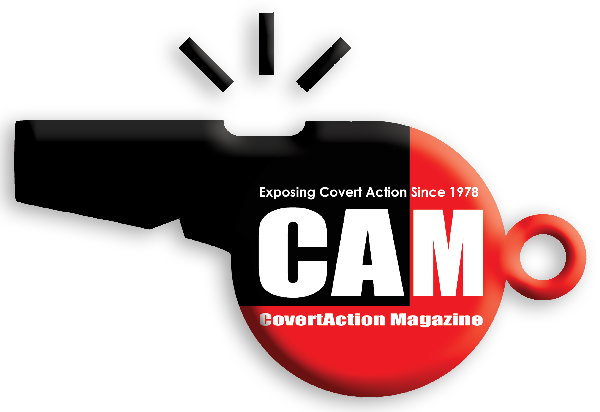
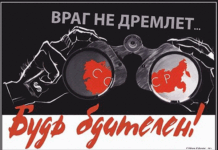
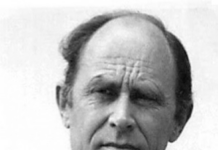

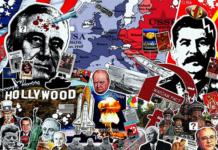
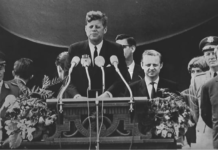

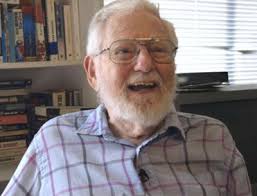


“When it became clear that the U.S. invasion of Russia was not succeeding, the Wilson administration began back-channel negotiations with Vladimir Lenin, the founding head of the Soviet Union.”
Similarly, a year before he became President, Richard Nixon decided that the Communist government in China was not going to go away and so it would make sense to negotiate.
Nixon later also wanted China to help him to extricate the United States from the Vietnam War, which he no longer considered winnable. This stance was the cause of a great deal of hostility from the military chiefs who later got together with the CIA to oust him from power.